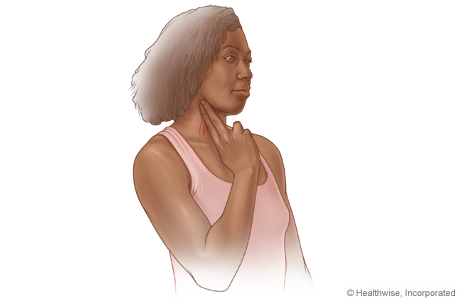Taking a pulse (Heart Rate)
Your pulse is the rate at which your heart beats. As your heart pumps blood through your body, you can feel a pulsing in some of the blood vessels close to the skin’s surface.
The usual resting pulse for an adult is 60 to 100 beats per minute. Certain illnesses can cause your pulse to change, so it is helpful to know what your resting pulse is when you are well. To find your resting pulse, count your pulse after you have been sitting or resting quietly for at least 5 minutes.
Checking your pulse on the wrist

You can easily check your pulse on the inside of your wrist, below your thumb.
- Gently place 2 fingers of your other hand on this artery.
- Do not use your thumb, because it has its own pulse that you may feel.
- Count the beats for 30 seconds, and then double the result to get the number of beats per minute.
Checking your pulse in the carotid artery

You can also check your pulse in the carotid artery. This is located in your neck, on either side of your windpipe. Be careful when checking your pulse in this location, especially if you are older than 65. If you press too hard, you may become lightheaded and fall.
Current as of: March 28, 2019
Author: Healthwise Staff
Medical Review:E. Gregory Thompson MD – Internal Medicine & Adam Husney MD – Family Medicine & Martin J. Gabica MD – Family Medicine
This information does not replace the advice of a doctor. Healthwise, Incorporated, disclaims any warranty or liability for your use of this information. Your use of this information means that you agree to the Terms of Use. Learn how we develop our content.

